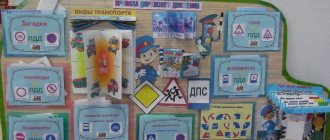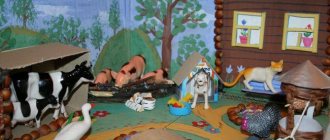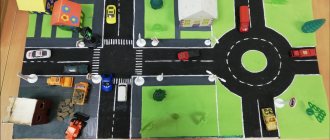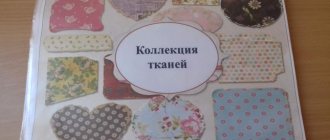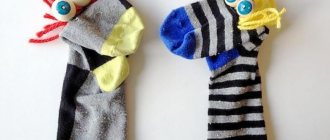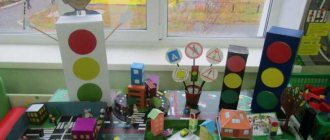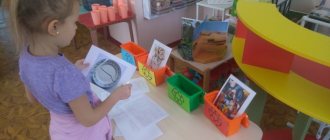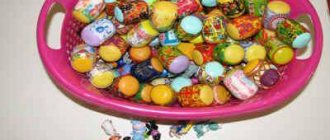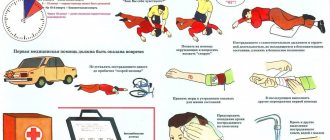Games and toys for kids
Contained in sections:
- Didactic games 31839
- Sensory development and education. Sensory 6484
Includes sections:
- Didactic and sensory aprons and skirts 99
- Smell. Games, manuals “Recognize by smell” 9
- Velcro games 96
- Keyboard games 12
- Games with rubber bands 63
- Games with a flashlight 27
- Palms. Games, teaching aids 49
- Marbles. Games with pebbles 181
- Couple, pick a couple, couple pictures 274
- Pick up a patch. Games, teaching aids 65
- Clothespins. Games with clothespins for children 484
- Tactile development of children. Games and benefits 435
- Color, learning colors. Games, teaching aids 1484
- Laces. DIY games with laces 167
- Noise boxes. Games, teaching aids 24
By groups:
- Junior group
Showing publications 1-10 of 1193. All sections | Sensory games
New
Photo
The best
Card index of games for the sensory development of young children Games for the development of tactile sensations: “Magic bag”
.
The child examines and places toys or objects in the bag in advance. Then he determines by touch what kind of toy it is and names it. "Find a pair"
. An adult shows the child an object. The child must find in the bag...
Multifunctional teaching aid made from plastic gratings for the sink “Sensory Cube”
«SENSOR CUBE»
Multifunctional didactic manual.
“
Sensory Cube ” is easy to manufacture, multifunctional, takes up little space, and can be used both individually and in a group. There are many exercises and games that can be used with this manual. U...
DIY educational games
It would seem that now you can buy almost any toys.
Why reinvent the wheel and engage in amateur activities? But games made by mother’s hands always enjoy special love from the baby, and even if they turn out not quite perfect, they are certainly original and with a considerable share of mother’s warmth and love. Plus, in the current uncertain economic climate, homemade toys can help you save some money to buy something more worthwhile, like children's books.
I admit that I do not belong to the category of handicraft mothers, rather the opposite. But with the birth of my daughter, the situation suddenly changed: I wanted to create something (or at least try to do it), tinker, invent. As it turned out, this requires a minimum of time and material costs, and the child’s enthusiastic reaction is the most pleasant reward.
Tactile bags
To make them you will need some colorful scraps and various fillings: cereals, beans, pebbles, rustling polyethylene, cotton wool, salt, small coins, etc. It is advisable to choose fabric of bright colors and different textures. You can also sew two-color bags.
Just cut out squares from the fabric, for example, 8x8 cm + 0.5 cm for allowances on each side. Sew the bags, leaving a small hole, turn them inside out, fill them with stuffing and sew up the hole. The baby will be interested in exploring rustling, ringing, crispy bright toys.
Sensory games - A collection of musical sensory-didactic games
Publication “Treasury of musical sensory-didactic…” MBDOU Kindergarten No. 31, Angarsk mus. director Matveeva E.N. Games for the development of pitch hearing Musical and didactic game “Teremok” (Who sings how? Who has what voice-timbre? Who walks how) Purpose. Developing the ability to recognize musical works, convey a musical image...
Image library "MAAM-pictures"
Photo report on the master class “Sensory games for children with ASD”
At the parent meeting, a master class was held for parents raising children with autism spectrum disorders. We conventionally call sensory games the purpose of which is to give the child new sensory sensations. Sensations can be very diverse: - visual...
Didactic game for sensory development of young children “Collect beads for Katya’s doll”
Didactic game for sensory development of young children “Collect beads for the Katya doll” The game is intended for children 2-3 years old. Integration of educational areas: “Cognitive development”, “Social and communicative” Purpose of the game: development of fine motor skills of the fingers,…
Matryoshka as an educational toy for the sensory development of preschool children Matryoshka as an educational toy used in the sensory development of preschool children Abstract: this article reveals the concept and essence of the sensory development of children, types of sensory standards, describes the significance of the nesting doll in the development of preschool children...
Do-it-yourself educational games: Tatiana Aleksandrovna Barchan’s toy library
In April, I added to my collection of ideas for educational games made by myself. I was lucky enough to attend an amazing event organized by the “Native Path” website: a game meeting with Tatyana Aleksandrovna Barchan.
She has an unusual story: a biochemist by profession, she worked at a research institute and did not think that she would come up with and create educational games for children with her own hands. But everything turned out differently: Tatyana was asked to work with gifted children 6-7 years old, and this is where her career as a teacher and inventor of educational games began.
Now Tatyana runs the Rebus Center for Education and Creative Development, and is the author of many games that have been recognized by experts as one of the best (quality mark “Child Psychologists Recommend”).
Tatyana Aleksandrovna captivated me with her creativity and elegance of solutions for children’s development in play. I listened to her and realized that 90% of all the ideas I had read on the Internet in recent years were different variations of her games, invented back in the 90s. I wrote several sheets of paper, sketched diagrams and ideas. Now I have found the time and am ready to share some sketches with you.
DIY educational games
1) Box with tracks for a magnet . The point is that for the game you need two magnets: one larger, it is hidden under the boxes (on the other side), the second is smaller, it will walk across the playing field. We move the small magnet with the help of a large one, which is not visible. Wonderful miracle for kids.
We take a small candy box as a “playing field” (so that it is comfortable for the child to hold in his hands), add a path, obstacles, and other elements. As a variant of the game situation: the car is driving on business, you need to stop at a gas station (which element), then across the bridge to a car wash (next element), etc.
2) A bone for the dog. You need several boxes, different in size, covered with different colored paper. There is a dog who is looking for a bone (we can easily change it to a character that you have at home).
We hide the bone in one of the boxes and give a hint: “the bone is in the box between blue and red” or “in the box above the yellow one.” For older children, it can be more difficult: “not in red, but above blue.”
Aerobatics - let the child hide the bone and ask such a puzzle for you.
3) A simple thermometer model . Everything ingenious is simple! A rectangle cut out of cardboard, numbers signed, a regular elastic band inserted, part of the elastic band painted over. If you pull the rubber band on the other side, the temperature on the thermometer rises; if you pull it in the other direction, it drops.
4) Another look at puzzles for kids: cut not a rectangular picture, but a circle into sectors. It is more difficult to assemble such a mosaic on one side, but easier on the other. In any case, a useful variety for training attention and thinking.
5) Children's library . We take 12 identical boxes, make them the same color, stick a number on the spine and a picture on the cover. By the way, the old calendar can be used as a source of numbers for this and other benefits. All books are stored in a large box for 12 books. There are a lot of options for games with such a library. You can develop speech by guessing from the picture on the cover what this book is about, what the plot is, what the story is. You can train the number series: collect books in order, find which book is missing, put it in reverse order, ask for the “next to the fifth” book, etc. As soon as I find suitable boxes, I will definitely make such a “library” for us.
6) Lotto for the difference between flat and three-dimensional figures. To do this, you will need sheets for filling and the actual volumetric figures. Tatyana made them herself from a special modeling mass.
The players’ task is to determine what shape the object pulled out of the bag resembles (a button is a circle, a ball is a ball, etc.).
It is very useful to pass all geometric concepts through your hands, to feel them in the literal sense of the word.
7) Comparison problems. Tatyana suggests interpreting the “more” and “less” signs as an arrow, which always points to the little one, to the baby, and recommends starting with pairs: mother and baby.
I really like this positive “arrow” because it is usually supposed to represent a crocodile that eats those who are smaller. First we play with a full-fledged arrow: from mother-baby we move on to the number of objects, then to numbers.
Then the arrow “loses” the stick and the “more”/”less” sign remains in its familiar form. Then we continue to play with cards with the usual sign.
 Game "Capricious buyer" . We officially allow kids to be naughty???? To play you need many different figures of different colors. These are goods in a store where a capricious buyer comes.
Game "Capricious buyer" . We officially allow kids to be naughty???? To play you need many different figures of different colors. These are goods in a store where a capricious buyer comes.
On his card it is indicated what he wants to buy, but something like this: not red, not round, but square. It is necessary to remove those cards that the buyer does not like and leave only those that meet the criteria.
In this way, kids learn the basics of set theory without noticing it themselves.
I showed you only a small part of the games that we discussed at the game library (only those where I have photos). It is clear with what care and love for children all the benefits are made.
In addition to ideas for developmental aids, Tatyana generously shared her gaming experience, tips on organizing games, making durable toys (her own creations passed through the hands of many children over several years), features of mastering mathematics, reading, and pedagogical tricks.
Tatyana is an amazingly enthusiastic person; after the game library, all the participants came out with sparkling eyes and full shopping bags, because In addition to homemade games, there are already many “ready-to-play” games. I am absolutely delighted with some of the acquisitions, Pasha too ????
Games “Loto – Colorful Gnomes”
Material: cards of a large field, differing in color - gnome heroes: red Kohle, orange Ohle, yellow - Jelly, green - Zele, blue - Gele, blue - Sele, purple - Fi, white - Belyash, gray - Serge, black - Chernysh.
Cut-out pictures - gnomes, geometric shapes, game details - 10 colors.
Option 1: all fields and drawings in the pictures are the same size.
Field of 4 parts. In the center there is a colored gnome, on top there is a circle, a square; below - a triangle, a rectangle - when you put all the figures on a large field - the drawing of a gnome is not visible.
Field of 6 parts. First row – petal, gnome, circle; second row – checkbox, square, circle.
Option 2: Sizes of fields and cards – large, medium, small. Place the cards on the field depending on the size of the picture and the field.
Option 3: the size of all three fields is large. The drawings on them are large, medium, small.
Field of 9 parts. The first column is a petal, a flag, a turtle; second column – Hedgehog One, red gnome Kohle, one from Transparent Number sticks; third column – circle, triangle, square.
Explanations: – the petal is opposite the circle – because their shape is the same – a circle; The flag is opposite the triangle - because the cutout on the flag is triangular; The turtle is opposite the square - because its shape, legs, and head are similar to a square. Hedgehog One and the number 1 together with the red gnome Kohle - because red is the first color in the rainbow. Hare Deuce and number 2 - together with the orange gnome Okhle - because orange is the second color in the rainbow and so on.
Instructions for the game:
1. Fill in all parts of the large field with pictures of the appropriate color and size. Many people can play, maybe 1 child can take the cards themselves and put them in the appropriate places.
2. The presenter fills in large fields with pictures - with errors - the size, color, shape does not match. The child is looking for where the mistake is.
3. Lay out all the cards with pictures on the table (first with one type of lotto, then more pictures). The classification task is to collect and arrange all the gnomes, red, light, bright, dark, one after another on the table; all red (blue, yellow, green) cards; all circles, squares, flags; all are not round, not blue, not big; all the numbers, all the little animals; build a tower of pictures - at the bottom - large pictures, above - medium ones, even higher - small ones.
4. Change of size. Place large pictures on the small gnome, small ones on the middle one, medium ones on the large one.
5. Color change. Place blue cards on the red gnome, gray cards on the black one, and white cards on the yellow one. Collect all the colorful pictures on one field.
6. Change of properties - color, size, shape. Collect on one field all the drawings that are not repeated in color, size, or image.
7. Make a train of trailers - each trailer differs from the previous one in one of the properties (image, color, size).
8. All rearrangements are clearly stated by the child, why you put this particular drawing - a change in properties.
9. Two rows of cells - 6 (or less or more) on each row. On the first row are red, yellow, blue, green, light blue, and gray gnomes. On the second row there are geometric shapes of the same color, but in a different order and one cell is empty. The gnomes were walking and lost their bags, found them and mixed them up. Let's help them take their handbags, their colors. You can only move pieces to an empty cell. The gnomes are waiting for us to help them. First, the figure is placed on an empty square of the desired color, like the top gnome - this is the first pair - how many squares and in which direction did we move it? Then again on an empty cell we place a figure of the corresponding color like the top gnome. Thus, all the gnomes teach their colored bags.
"Permutations"
Children's age - from 3-4 years - easy tasks on 3-4 cells of the "Carpet Chest", 4-7 years - tasks on 4-10 cells of the "Carpet Chest".
Objectives of the game: - to develop and improve the ability to examine the conditions of problems, the ability to plan solutions to problems, the ability to consciously solve problems to the end; - develop attention, memory, thinking, observation, concentration, visual perception; - develop the ability to navigate on a plane - left, right, up, down, up right - Peacock, down right - Pony, up left - Lion, down left - Doe; - develop counting skills - the number of steps in cells, subtract a smaller number from a larger number.
Materials and equipment: “Carpet Box”, cards of numbers of any variant (animal figures, numbers from the game “Transparent Number”, “Dominoes”, a set of numbers on a carpet).
Progress of the game.
Option 1. For children of senior preschool and primary school age. On the “Carpet Casket” in the first row, in each cell on top there are numbers from 1 to 10 in order. One of the numbers is missing - 1, 2, 3, 4, 5, 6, ..., 8, 9, 10. (no 7).
On the second row, the numbers from 1 to 10 are arranged in random order. No number is the same as in the first row. 2, 5, 6, 1, 3, …., 10, 4, 8,9. (no 7).
Task: rearrange the numbers in the second row so that they are the same as in the first, in ascending order.
Condition: you can only put a number in an empty space.
Game situation: identical numbers (little animals) walked in pairs along the paths of Kovrovaya Polyana, but one of them wanted to have fun and ran away from his friend, and then got lost. Let's guys help him find and catch up with his friend.
Questions for children:
— neighbors of numbers in the first row; who is behind what number; who is in front of some number; who stands between two numbers; who comes after a certain number; who is fifth (any) from the end. - who is in first place in the second row; who is 2nd, 3rd, 4th, etc; who stands before 5, after 4, behind 7, between 4-6, etc. - what is the number to the right above 6 on the second row; bottom left of 5 in the first row; any question on orientation - Lion, Peacock, Pony, Doe; — what number is missing in the first row? – 7; - Which seat is empty in the second row? – 6th cell; — where is the number that needs to be put here? – number 6 is in cell 3; — what number can we put in its place? – 6; - how to do it? – move 6 by 3 cells to the right; - how to check if we did it right? – 6-3=3 steps to the right; — what next number can we put in its place? Which cell is empty? – put the number 3 on the 3rd cell; - Where is the number 3 now? – on cell 5; — how should we move it? - left 2 cells; - how to check? – 5-3=2 steps to the left; - which cell is empty and what number can we put there? – in cell 5 you can put the number 5; — where is 5 now? How can I move it to its place? – the number 5 is in the second cell, move it 3 cells to the right; - how to check? – 5-2=3 steps to the right; - what will we do next? – empty 2nd cell, put the number 2 in it, now it is in 1st cell, move it 1 step to the right, check 2-1 = 1 step to the right; - what do we do next? – empty cell 1, number 1 is in cell 4, it must be moved 3 steps to the left, check 4-1 = 3 steps to the left; - the following actions? – empty cell 4, number 4 is in cell 8, it must be moved 4 steps to the left, check 8-4 = 4 steps to the left; - what's next? – empty cell 8, number 8 is in cell 9, you need to move it 1 step to the left, check 9-8 = 1 step to the left; - further? – empty cell 9, number 9 is in cell 10, you need to move it 1 step to the right, check 10-9 = 1 step to the right; - and what is the last number out of place? – number 10, it is in the seventh cell, you need to move it to the right 3 steps, check 10-7 = 3 steps to the right; - now all the numbers are in their places, are they the same in the first and second rows? - Yes; — what number is missing in both rows? - 7.
Option 2. Starting from 3 years.
On the “Carpet Casket” in three cells on the first row there are any two figures (there can be: images of geometric shapes, objects, letters, numbers, people, heroes of the “Purple Forest”, animals, transport - on any topic currently being studied in group).
In the second row, below them, in three cells, these same two figures are located in a different order (for example, in the 1st row - a square, an empty cell, a circle; in the 2nd row - an empty cell, a circle, a square).
Task: rearrange the figures in the second row so that they are in the same order as in the first row.
Condition: you can only place a piece on an empty space.
Children can rearrange the figures themselves on the “Carpet Casket” one by one; The teacher encourages the children to pronounce the necessary actions: which cell is free, what needs to be placed there, where the desired figure is, how the figure can be placed - how many cells to the right or left it needs to be moved.
For children who successfully complete different versions of tasks and exercises, a larger number of cells are used in the game - 4, 5, 6 and up to 10.
The whole group of children on their “Mini-Larchiks” does the same work as on the “Kovrograph Chest”. You can first ask the children to rearrange the figures on their mats themselves. Then check how it turned out on the Carpet, each time the child must pronounce his actions - which cell is empty, which figure needs to be put there, where this figure is, how to move it to the empty cell.
Options for solving problems may be different for each child, depending on the arrangement of the figures. When children cope with easy tasks on 3 cells, we increase the number of cells from 4 to 10.
